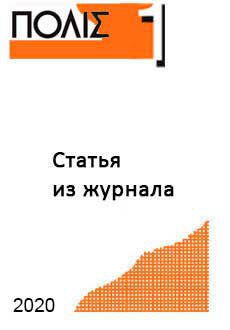Online shop of "Polis. Political Studies" Journal
We in the world, the world in us
Kirichenko E.V. Export Controls as a Tool to Maintain U.S. Leadership in a Changing World. – Polis. Political Studies. 2020. No. 1. P. 74-88. (In Russ.).
Free!
export controls, national security, foreign policy, dual-use items, technology, intangible technology, critical technology, WMD nonproliferation, antiterrorism, sanctions.
The article discusses the features of the American system of export control on dual-use products, which allowed it to become an important tool of foreign policy. Using system-historical and systemfunctional methodology, the author analyzed the evolution of the US export controls through the prism of changes in the American concept of national security. The task is to investigate why the system, created during the Cold war, is so popular today. Three periods are designated: the period of the Cold War, the 1990s – the first decade of the 2000s, the present stage. Within each stage the author analyzes significant changes in the export control legislation. The export control policy in the United States was revised in the light of new approaches to the problems of national and international security, as well as foreign policy objectives. In 1994, COCOM was dismantled. In the 90’s and early 2000’ issues of nonproliferation of WMD and prevention of WMD falling into the hands of terrorist groups began to occupy a key place in the policy of national security and export controls of the United States. This contributed to increasing cooperation between Russia and the United States. The two countries managed to improve the multilateral export control regimes, to hold Resolution 1540 in the UN Security Council in 2004, which strengthened the international legal framework of the export controls. There is an acute internal political struggle around the export controls rules. Leading agencies, supported by individual groups of the political elite, are trying to impose their strategic priorities. Export controls are viewed by the business community as a restrictive measure. Naturally, business is lobbying for easing the export controls mode. Academic circles also actively support their right to free exchange of scientific and technical information. One can observe a constant tug of war between supporters of softening and tightening of the regime. The interpretation of US national security is qualitatively expanding due to dispersion of challenges and threats to its global leadership, the emergence of new breakthrough technologies in the civil and defense fields. Particular concern of the USA is the development of China’s military and innovative potential, in connection with which there is a painful attitude to the possible transfers of American technologies to China. Export controls is considered to be the most important mechanism preventing such transfers. At present, the development of the American export control regime is undergoing a new toughening cycle. The position of hardliners within the US political elite in the implementation of such a policy is strengthening. The United States is looking for an enemy and trying to make it common to the entire Western world. The role of embargoes and sanctions in the American export control regime, as well as extraterritorial application of American rules, has increased again. The export control regime is used as a tool to maintain U.S. leadership in a changing world, to reorganize the world order in the interests of the United States.
 English
English Русский
Русский

Reviews
There are no reviews yet.